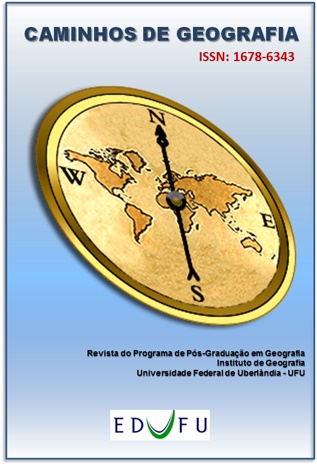ECOTONE SOILS IN NORTHEASTERN BRAZIL
DOI:
https://doi.org/10.14393/RCG228155391Palabras clave:
Caatinga, Semideciduous forest, Dry forest, Water storageResumen
Texture, base saturation, organic carbon content, and water storage availability of soil are drivers of plant physiognomy and composition of communities. Soil properties in ecotone areas are still poorly studied, and the transition between dry, moist, and semideciduous forests is defined only by climate parameters. The objective of this study was to describe the soil properties of a moist-dry forest ecotone in Northeastern Brazil. Seven soil profiles were dug in a pristine semideciduous forest known as “Agreste”. Four more pedons were described to represent soils of dry forests. Morphology, reactivity, texture, organic matter content, and water storage capacity of the soil horizons were determined. The soils of the study area are derived from granites and granitoids, rocks highly resistant to weathering. Soils of dry forests are loam, neutral to alkaline, and hypereutrophic. Soils of semideciduous forest are sandy, acidic, dystrophic, and have up to 65% higher C content. The rocks act as impermeable layers to water, and consequently, most soils develop stagnic properties in semideciduous forests. Soils are dystrophy and have low CEC and loam texture. These properties are attributed to ferrolysis. Umbrisols and Stagnosols with higher water storage capacity than dry forests soils sustain semideciduous forests in Northeastern Brazil.
Descargas
Descargas
Publicado
Cómo citar
Número
Sección
Licencia
Los autores que publican en esta Revista aceptan los siguientes términos: a) Autores conserva los derechos de autor y otorga a la revista el derecho de primera publicación, con el trabajo bajo licencia Creative Commons Attribution-NonCommercial NoDerivs 4.0 International. b) Se permite y anima a los autores a publicar y distribuya su trabajo en línea (por ejemplo, en repositorios institucionales o en su sitio web personal), ya que esto puede generar cambios productivos, así como incrementar el impacto y cita de trabajo publicado. c) Por el hecho de aparecer en este diario de acceso público, los artículos son de libre uso, con sus propias atribuciones, en aplicaciones educativos y no comerciales.











